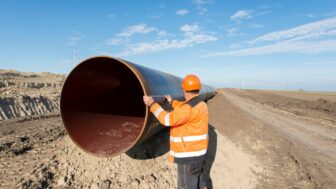Tiffany Hartung, Maryland Climate Coalition, o:(443) 759-3402, c: (248) 933-2451, hartungt@nwf.org
Kelly Trout, Chesapeake Climate Action Network, o:(240)396-2022, c: (717) 439-0346, kelly@chesapeakeclimate.org
Top MD Lawmakers Push for Clean Energy Expansion and Record-Large Jobs Bill on First Day of General Assembly
2016 legislation would boost wind and solar while building a diverse workforce, fulfilling President Obama’s State of the Union call to “invest in the future”
ANNAPOLIS—On the first day of the 2016 Maryland General Assembly session, state legislators joined clean energy advocates on Lawyers’ Mall to push for legislation that would significantly boost Maryland’s use of renewable energy, while creating the largest clean energy jobs training program in state history.
The Maryland Clean Energy Jobs Act of 2016 will ensure Maryland gets 25 percent of its electricity from clean sources like wind and solar by 2020, up from the current goal of 20 percent by 2022. It includes a $40 million plan to train and prepare more Marylanders for careers in clean energy and to bolster minority- and women-owned businesses within the clean energy economy.
Influential lawmakers—including the chairs of key House and Senate committees—joined today’s press conference with solar industry and environmental leaders, and dozens of climate activists. Large blown-up photos depicted the benefits of the bill, from cleaner air and healthier children to job training in underserved communities to reduced emissions of climate-disrupting pollution.
“We’ll grow Maryland’s clean energy economy in a way that increases the diversity of workers and business owners,” said Senator Catherine Pugh, Senate Majority Leader. “As we create more than 1,000 new solar jobs per year, we’ll also give more Marylanders pathways to good-paying careers.”
“2016 is the year to pass the Clean Energy Jobs Act and invest in Maryland’s future by bringing more solar, more wind, and more jobs to our communities,” said Senator Brian Feldman, the lead Senate sponsor of the bill.
“This bill will ensure fast-growing industries create more jobs right here in Maryland,” said Delegate Bill Frick, the lead House sponsor of the bill.
“Expanding our state’s clean energy use and growing our state economy go hand in hand,” added Delegate Dereck Davis, chair of the House Economic Matters Committee. “We’re talking about thousands of new Maryland solar jobs that pay an average of $23 per hour, and new industries that could stimulate more Maryland manufacturing and construction.”
“I look forward to passing the Clean Energy Jobs Act out of my committee so we can keep Maryland at the forefront of clean energy,” said Senator Mac Middleton, chair of the Senate Finance Committee.
“This is a win-win-win for our economy, our environment, and our health in Maryland,” said Senator Rich Madaleno, vice-chair of the Senate Budget & Taxation Committee. “The climate benefits alone will be equal to taking 563,000 cars off the road each year. Cleaner air will mean fewer cases of asthma, healthier families, and reduced health care costs for the state.”
Expanding Maryland’s Renewable Portfolio Standard to 25 percent will create incentives for roughly 1,300 new megawatts of clean energy. Plummeting solar and wind prices and abundant, untapped renewable assets position the state to easily achieve this higher goal at little to no cost to ratepayers, according to preliminary results of a study commissioned by industry leaders.
The legislation creates a Clean Energy Workforce Account to provide job training in the clean energy sector targeted to areas of the state with high unemployment. It also establishes a Clean Energy Business Development Fund to help minority and women-owned businesses enter and grow within the clean energy economy. This workforce development plan would tap $40 million of unallocated contributions to Maryland’s Strategic Energy Investment Fund.
“I’m moving up the career ladder in clean energy thanks to training programs that gave me in-demand skills,” said Jarrell Henry, an energy auditor with Hawkeye Construction in Baltimore City. “Since graduating from Civic Works’ Baltimore Center for Green Careers in 2012, and gaining additional certifications, I’ve been promoted to crew leader and now to energy auditor. More Marylanders deserve these same opportunities.
“This bill is a top priority for Maryland’s environmental community,” said Karla Raettig, director of the Maryland League of Conservation Voters and member of the Maryland Climate Coalition. “It will reduce harmful greenhouse gas emissions, which are causing rising sea levels, record storms, and increased flooding across Maryland.”
Advocates are using the hashtag #CleanerMDnow to distribute information about the 2016 legislation.





